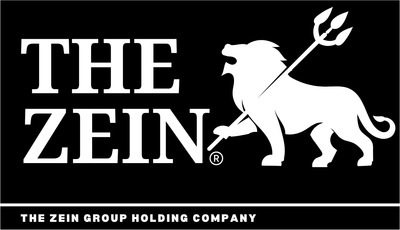Sovereign-Grade Algorithmic Asset Architecture

An Institutional Framework for Disciplined Market Mastery
This architecture has been conceived as a sovereign-grade construct, not merely as an algorithmic mechanism, but as an institutional infrastructure where the governance of private wealth converges with the discipline of asset management. Designed in the image of custodial banking frameworks, it embodies the discretion, resilience, and precision that are ordinarily the preserve of internal wealth offices and sovereign entities.
Standing as a banking-class institutional architecture, this platform supports, complements, and where required, may even supplant traditional private bankers and wealth managers, reflecting the standards of hedge-fund infrastructures while remaining enclosed within a closed-loop custodial design; sovereign entities, select institutions, and distinguished investors of high net worth, advanced experience, or engaging with private banking services access a realm of wealth governance at its highest order.
Institutional Features
The framework reflects the standards of hedge-fund infrastructures while remaining enclosed in a closed-loop custodial design. Its scope permits sovereign entities, select institutions, and distinguished individuals to access a platform aligned with the governance of wealth at its highest order.
Intelligent execution aligned with institutional mandates.
Asset Classification and Filtering across currencies, equities, ETFs, and sovereign instruments.
Institutional-grade configuration and custodial tools.
Infrastructure of hedge-fund calibre, designed with closed-loop resilience.
Functional resemblance to internally managed wealth structures.
Admission reserved for sovereign entities, strategic institutions, and qualified individuals.
Fully automated execution governed by immutable principles.
Risk and Capital Governance
The architecture is underpinned by a philosophy that places capital preservation above speculation. Its systems embody the prudence of institutional banking practice, ensuring continuity, stability, and resilience in every allocation. Within this sovereign-grade design, advanced control systems converge with a comprehensive capital management framework and intelligent integration of precisely calculated entry points, leaving no room for randomness or unmanaged exposure; the algorithmic architecture mirrors market dynamics under stringent temporal constraints and rigorously defined trading sessions, reinforced by multilayered filters encompassing news, price spreads, and market gaps to ensure robust and sustainable trading security. The system relies on sophisticated protective mechanisms including graduated automatic stops, strict daily and monthly loss limits, and multi-tiered safeguards that confer resilience against market volatility and extraordinary conditions; embedded within these controls is a meticulous break-even protocol alongside an intelligent trailing stop, both reinforcing the structure’s capacity to preserve capital and stabilise positions amidst turbulence. The fusion of position adjustment strategies and vigilant trend following bolsters systemic stability, while temporal filters and trade session refinement uphold optimal alignment with market environments, embodying a sovereign-grade algorithmic trading model governed by the highest standards of institutional discipline and control.
Real-Time AI Risk Management System
Real-time oversight and continuous data connectivity.
Intelligent sizing of positions and adaptive performance parameters.
Inviolable capital preservation doctrine with non-negotiable safeguards.
Hybrid institutional risk models with sovereign calibration.
Automated systems sustaining stability through precise fractional adjustments.
Sovereign-governed capital stability embedded within the framework.
Disciplined allocation practices equivalent to the standards of bank custodianship.
Adaptive Stewardship Framework
The Sovereign-Grade Algorithmic Asset Architecture further incorporates institutional safety layers, designed to govern exposure and execution according to stringent confirmation thresholds. These safety protocols reflect a broader framework of disciplined daily engagements, strategic long-term positioning, and institutional wealth preservation principles that define the system’s sovereign-grade operational identity. Within this framework, the system may operate under multiple predefined modes:
Default Operational Mode: The system executes trades under graduated confirmation levels, permits limited compensatory trades, and employs intelligent hedging only under emergent conditions.
Standard Safety Mode: Allows broader asset engagement while maintaining confirmation thresholds, utilizing flexible hedging strategies, and enforcing strict single-entry execution per asset.
Maximum Safety Mode: Trading is permitted only under near-certain confirmations, with hedging fixed across positions and exposure strictly limited to a single asset per day.
Long-Term Investment Mode: Dedicated to the systematic acquisition of long-term assets, with exposure allocated conservatively, reliance on recurring distributions as income, and automatic hedging in the event of significant downside risk. The system also applies intelligent filtering for optimal long-term assets, adjusting its choices based on the economic environment.
Hybrid Mode: Integrates a sovereign hybrid capacity, allowing the system to transition through a designated control from its conventional time-disciplined rhythm into a broader custodial configuration, where an AI-driven risk management continuously adjusts positions, leverage, and exposure in real time. Within this mode, the system performs sovereign-grade asset classification and filtering across selected asset classes, ensuring eligibility and institutional integrity, while enforcing daily value thresholds, dynamically adapting risk, and executing large orders in split tranches to minimize market impact, enabling seamless operation across the full twenty-four-hour cycle.
These adaptive safety layers operate entirely within the institutional governance framework, ensuring that operational flexibility, risk mitigation, and capital preservation are aligned with sovereign-grade standards.
Strategic Execution
Execution within this architecture does not seek volume or velocity, but order and restraint hallmarks of private wealth discipline.
Fixed logic of execution ensuring uniformity and predictability.
Calibrated allocation sizes governed by strategic foresight.
Defined outcomes with controlled margins of gain and setback.
Singular engagements within the daily cycle, ensuring clarity and prudence.
Oversight maintained by continuous surveillance protocols.
Zero-trade discipline: the sovereign choice to abstain where conditions fail institutional standards.
Structured methodologies reflecting custodial banking precision.
Safeguards and Oversight
Protection systems within the architecture reflect the resilience of sovereign custodianship, embedding trust and continuity at every stage.
Autonomous audit and oversight records.
Proprietary intelligence modules identifying and neutralising adverse patterns.
Discretionary closure framework permitting authorised human oversight.
Stress-tested through major market crises to embed structural endurance.
Intelligent filtration aligned with institutional timing, volatility, and external events.
Strategic exclusion of destabilising variables through blacklist integration.
Real-time liquidity and volatility screening.
Fail-safe suspension triggers against systemic irregularity.
Algorithmic Execution (Split Orders – Hybrid Mode)
Multi-layered institutional protections ensuring custodial integrity.
Institutional Relevance
This architecture stands as an institutional instrument a sovereign-grade framework where disciplined speculation is harmonised with long-term asset stewardship, bridging the governance of private wealth offices with the rigour of institutional asset management.
supports the mandates of sovereign entities and distinguished individuals alike, operating at the level of institutional banking. In its philosophy and discipline, it holds equivalence with and in certain custodial contexts, replacement of conventional bank wealth managers.
Through its sovereign safeguards and principled execution, it elevates algorithmic allocation into a discipline of financial governance, preserving capital not for the present alone but for the enduring legacy of those it serves.
